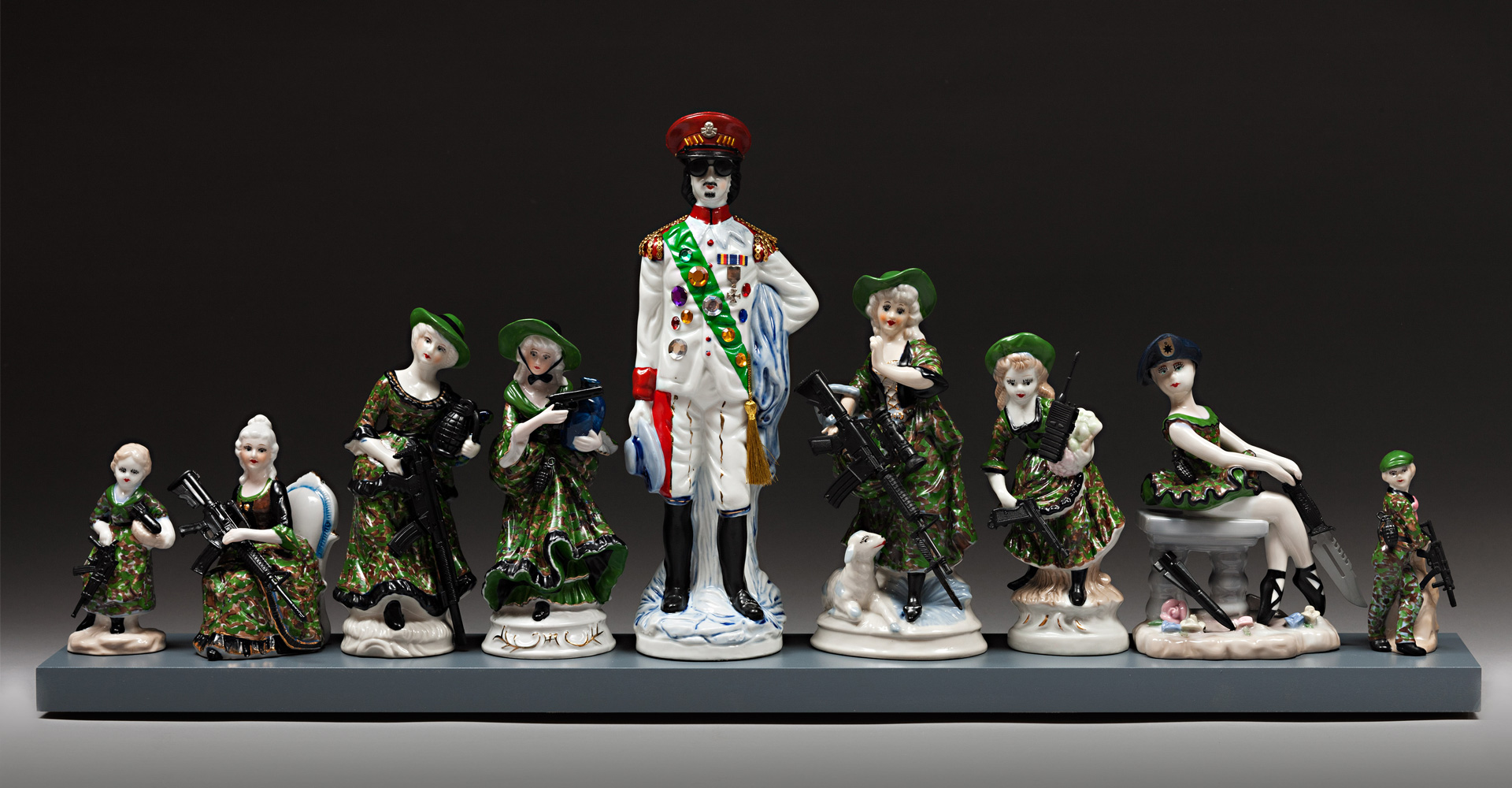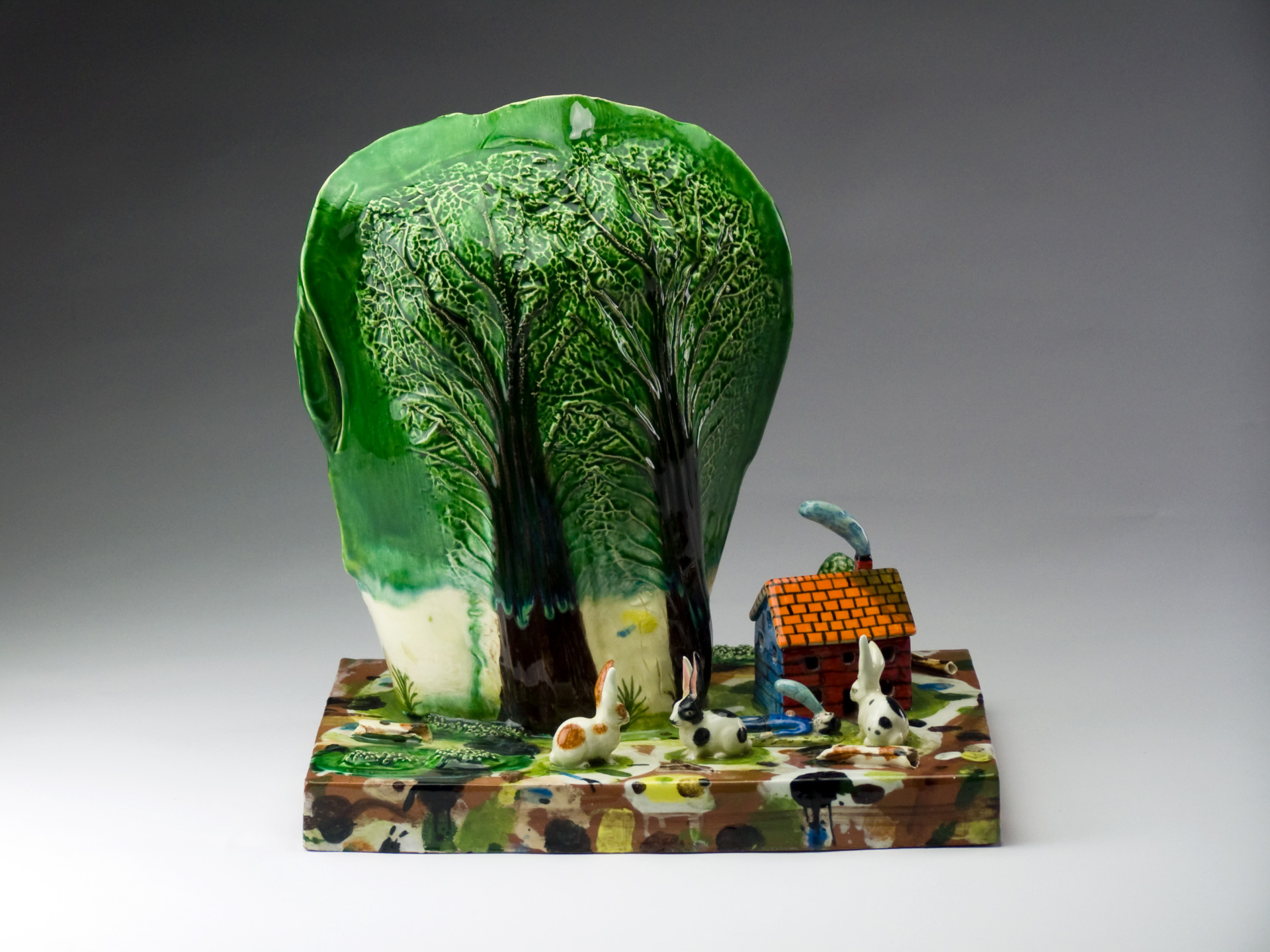GALLERY 1
Barnaby Barford, Stephen Bird, Penny Byrne, Steve Dixon, Amy Douglas, Ingrid Murphy
20.11.21 — 22.01.22
The mass-produced figures created primarily in Staffordshire from the 18th century onwards are so familiar to us. The potters created naïve portrait busts and flatbacks which reveal much about the time and circumstances in which they were made. They were created cheaply to be available to all, some were purely decorative, but many celebrated the lives of politicians, criminals, entertainers, national heroes and royalty. They have almost become part of our national identity, a staple of British homes and mantlepieces for hundreds of years. This exhibition brings together a group of artists who make reference to this tradition, exploring clay techniques as well as our humanity and humour. Their work has a powerful ability to engage the viewer, with works which are at first so familiar but on closer inspection subvert the genre with surreal and contemporary narratives.

Penny Byrne, like many of the artists in the exhibition uses found ceramic figures, adapting and adding to them to comment on the world she sees around her. The familiarity and comfort of these old figures is disturbed in works like EuropaEuropa where small pastoral figures are placed in teacup boats with bright orange life vests commenting the ongoing migrant and refugee crisis across Europe. This subversion of the familiar is also seen in the work of Barnaby Barford where mass produced found objects are turned into sinister yet humorous sculptures. The sentimental figures become characters in his narratives which comment on contemporary politics and society. Stephen Bird draws on the traditions of folk-art creating works which are both political and personal, using and referencing the commercially made ceramics he grew up around, it’s heritage as an industry and the effect those objects have had on our everyday lives. Stephen Dixon satirical works are influenced by museum collections and contemporary political events such as Brexit and Trump’s presidency, incorporating classical, mythological as well as pop culture figures.
Amy Douglas works with broken Staffordshire ware, using the point of where the piece is broken as a starting point for the surreal narratives she creates. She uses traditional restoration techniques and is interested in the past ownership of the objects, the stories connected and retold through them. Ingrid Murphy is interested in how we connect and interact with domestic objects, she 3D scans traditional Staffordshire ware, inserting her own face, QR codes, electrical components and touch sensitive sound triggers. The emotions and reactions we have to these seemingly familiar objects are subverted by the use of technology and overt political statements on subjects such as Brexit.
All the works in this exhibition are surprising, thought provoking, often funny. Reflecting modern thoughts and commentary on social history, politics as well as personal stories. They are a physical manifestation of our life and times.

